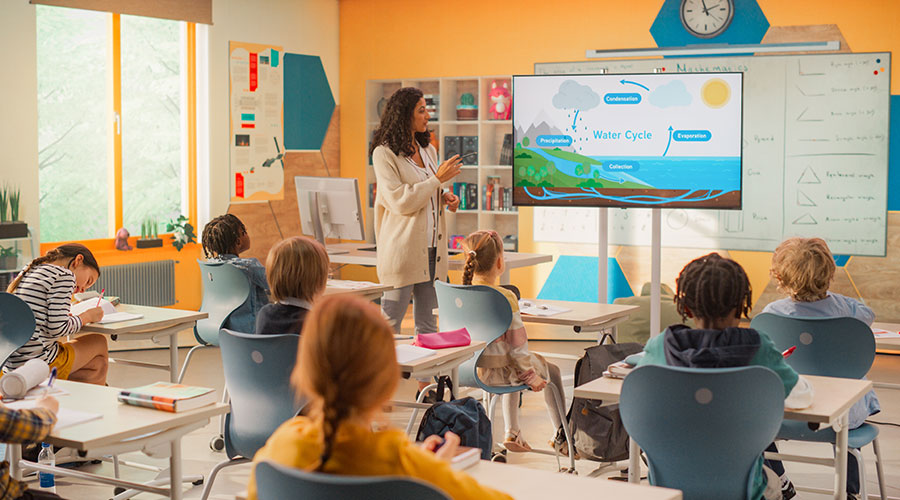Ponderosa High School Involved Students in Teaching Value of Saving Energy
Big Changes Start Small
In schools, the student groups start small. Take for instance Ponderosa High School's group, which began with just five or six students. At the beginning, this small group engaged in education sessions to discuss with their peers and teachers why saving energy is important. These sessions helped to build a culture of energy savings among the students, as well as awareness of other environmental initiatives like recycling. Over time, these ideas of efficiency and saving money became ingrained in the culture of the school, until it was no longer just a small group of students, but rather all of the students who were recycling and reminding their teachers to turn off the lights.
The significance of this cultural change is exemplified by the strides that Ponderosa has been able to make with recycling. Prior to the start of the energy management program at the school, recycling was little more than an afterthought. Now the school consistently diverts 81 percent of its waste from the landfill through recycling. Due to lower costs of recycling, the district now saves $150,000 annually in avoided costs for hauling trash to the landfill.
In addition to recycling, the primary program used at Ponderosa and other Douglas County schools for continuous engagement is the Daytime Habits Audit Program. The program is run by students and involves auditing three or four rooms every week while the teacher is away to see which teacher's habits are living up to the standard of the school's energy goals. One of the main reasons for this audit is to drive behavior in general. It keeps energy management top of mind — which has helped maintain success at the schools. But, the audit is not complex. Rather it's surprisingly simple; are the lights, computers, projectors, and document cameras off? If the answer is yes, the teacher gets a smiley face. If not, no smiley face.
The Importance of Efficiency
So why are the teachers willing then to subject themselves to such an intrusion? One reason is because the students have taken the time to make the case for why saving energy is so important for the school. That reason has become the motto for the schools. Every dollar they save in energy is one more dollar that they can spend on students. This is true at Douglas County because after the earlier successes at Mountain Vista and other schools, the district agreed to further incentivize savings by splitting the money saved in individual schools with the school itself. This reward for the students and teachers at the schools has been another crucial component for the success of the energy management programs. In fact, 59 of 68 schools currently participate in the incentives program. In this way, making behavioral changes not only makes sense because of the broader cultural change in the school, it makes sense because the school can choose how they would like to invest that money back into school, to improve facilities, buy textbooks or computers, anything they think will improve the education their students receive.
Getting students active has made an enormous difference for the cost savings that Douglas County has seen from their energy efficiency efforts. The structure that the district administrators and teachers provide sets the stage for the students to use their own creativity and drive. Then, the students provide the continuous effort required to remind their classmates and teachers about the goals for the school, what it means to them, and how to make their school better. One, or even a dozen, sustainability champions could never carry out this type of action.
Ben Stanley, LEED AP, BD&C, is senior sustainability manager at YRG Sustainability. Stanley works on a range of green building projects with technical expertise in green building process management, project team coordination, sustainable operation, and LEED documentation and certification. You can reach Stanley at bstanley@yrgxyz.com.
As a senior project manager, Dan
LeBlanc works with project teams to implement cost-effective sustainability. He has extensive analytical and modeling experience, and is able to provide meaningful cost-benefit data for potential strategies early in the design process.
Related Topics:













